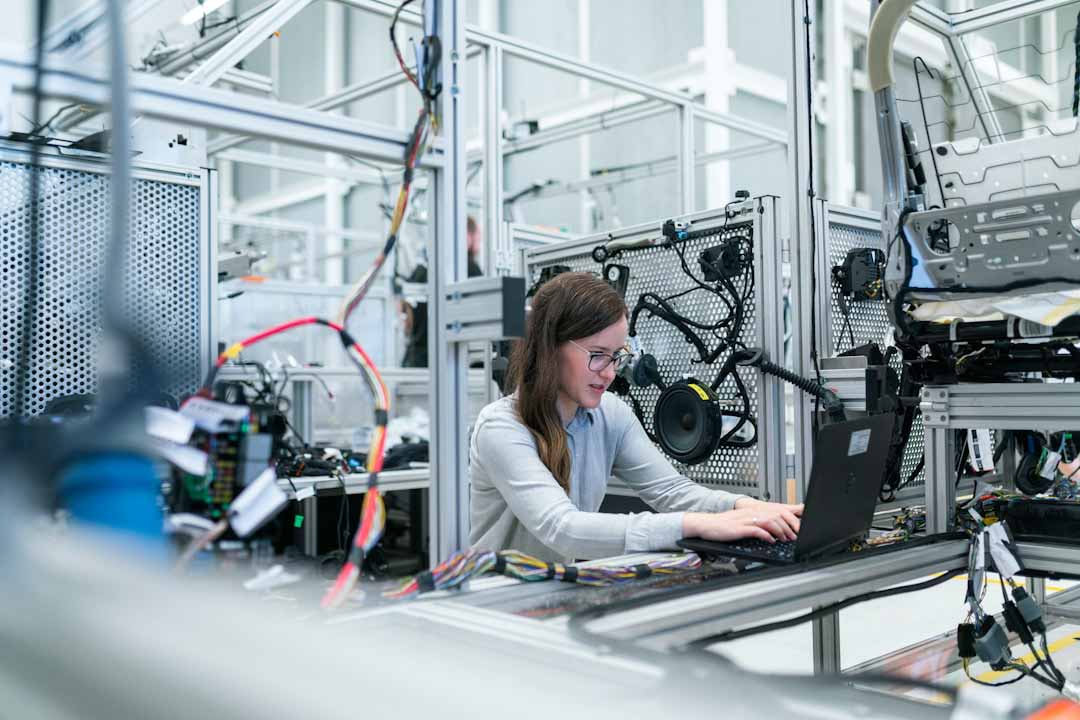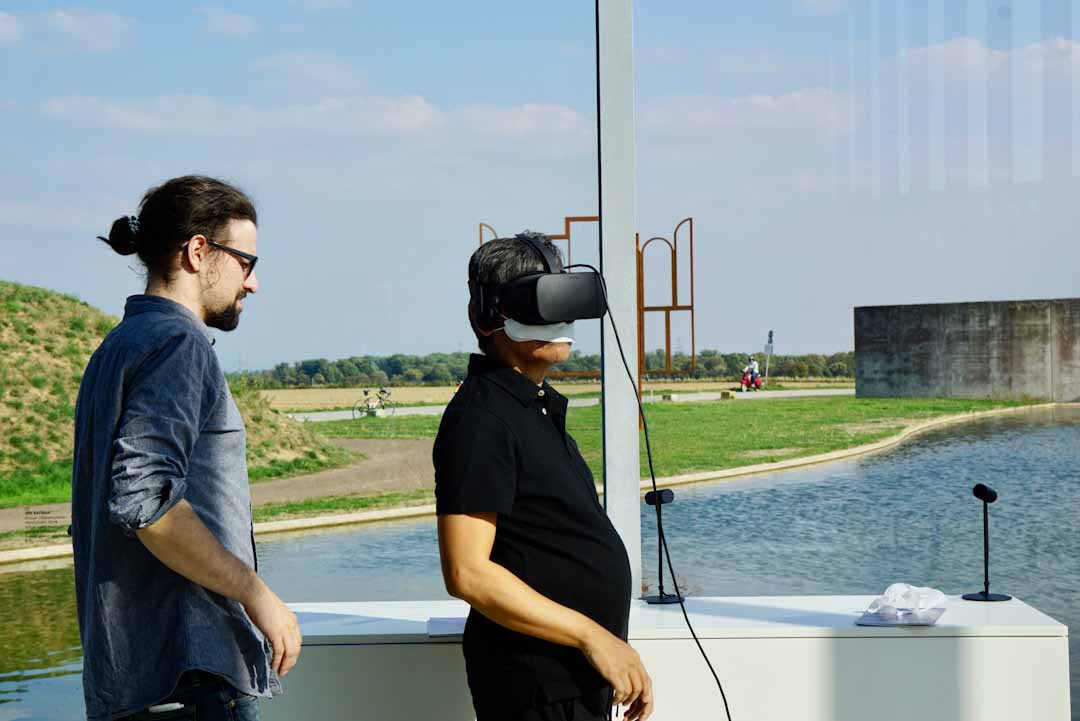Integrating Technology in CTE: Elevate Your Online Career Training Programs
Integrating technology into Career and Technical Education (CTE) is a transformative approach that elevates online career training programs, making them more dynamic and effective. As digital tools become increasingly prevalent in educational settings, they offer innovative ways to create interactive and engaging learning experiences that better prepare students for real-world challenges. By examining successful implementations and understanding the necessary professional development for educators, we can ensure that these programs not only meet industry demands but also empower students with the skills they need to thrive. Join us as we delve into strategies that bridge the gap between education and industry, fostering partnerships that propel career training into the future.

The Role of Technology in CTE
Enhancing Learning with Digital Tools
Integrating digital tools into Career and Technical Education (CTE) programs transforms the learning experience by providing interactive and practical engagement. These tools include simulations, virtual reality, and digital collaboration platforms that offer hands-on experiences mirroring real-world environments. By incorporating such technologies, educators can create immersive learning scenarios that enhance student understanding and retention. For instance, virtual labs allow students to perform experiments without the constraints of physical resources, fostering creativity and problem-solving skills. Additionally, digital assessment tools enable personalized feedback, helping students identify areas for improvement and track their progress. The use of online career training modules further supports flexible learning, accommodating diverse learning styles and paces. Ultimately, these digital tools not only make learning more engaging but also align educational outcomes with industry standards, ensuring students are well-prepared for their future careers.

Preparing Students for the Workforce
Technology integration in CTE programs plays a pivotal role in equipping students with the skills required for the modern workforce. By using technology-driven tools, students engage in experiential learning that mirrors today’s occupational demands. For example, industry-standard software and hardware are integrated into the curriculum to provide hands-on experience with the tools professionals use daily. This approach not only familiarizes students with current technologies but also enhances their problem-solving and critical-thinking skills. Furthermore, online career training platforms enable students to gain certifications and credentials recognized by industries, boosting their employability. The use of digital portfolios allows students to showcase their work to potential employers, demonstrating their competencies and achievements. By bridging the gap between academic learning and practical application, technology in CTE ensures students are workforce-ready, equipped with both the technical and soft skills necessary to succeed in their chosen careers.

Bridging Education and Industry Needs
Technology serves as a vital link between educational institutions and industry requirements, ensuring that CTE programs produce graduates who meet current job market demands. By integrating industry-specific tools and platforms into the curriculum, educational programs can align more closely with professional standards and expectations. Partnerships with industry leaders facilitate this process, allowing educational institutions to stay updated on emerging trends and technologies. Additionally, technology enables real-time data analysis and feedback mechanisms that help educators adjust their teaching strategies to better align with industry needs. For instance, using analytics from online career training platforms, educators can identify skill gaps and tailor their programs accordingly. This proactive approach ensures that students are not only learning relevant content but are also developing the competencies that employers are actively seeking. Ultimately, leveraging technology in CTE programs fosters a dynamic educational environment that continuously adapts to the evolving landscape of industry needs.

Effective Strategies for Integration
Embedding Interactive Learning Experiences
Interactive learning experiences are essential for engaging students in CTE programs and ensuring they acquire practical, job-ready skills. One effective strategy is the use of gamification, where educational content is transformed into engaging games that make learning fun and competitive. Simulations and virtual reality environments offer students opportunities to practice skills in realistic settings without real-world consequences. These technologies provide a safe space for trial and error, boosting confidence and competence. Additionally, incorporating project-based learning through digital platforms encourages collaboration and critical thinking as students work on real-world problems. Online forums and collaborative tools further enhance this experience by enabling peer-to-peer interaction and teamwork. Educators can use these interactive methods to provide immediate feedback, helping students refine their skills continuously. By embedding such interactive experiences, CTE programs create dynamic and engaging learning environments that motivate students and prepare them for successful careers.

Leveraging Online Career Training Platforms
Online career training platforms are a powerful tool that CTE programs can utilize to offer flexible and accessible learning opportunities. These platforms provide a variety of courses and resources that allow students to learn at their own pace, accommodating different learning styles and schedules. By leveraging these platforms, educators can extend learning beyond the traditional classroom, offering modules that cover a wide range of industry-relevant skills. This flexibility is crucial for students who may be balancing work, school, and personal commitments. Moreover, many platforms offer certification programs that are recognized by industries, enhancing students’ resumes and increasing their employability. Interactive features, such as discussion boards and live webinars, foster a community learning experience where students can engage with peers and instructors. By incorporating online career training platforms into CTE programs, educators can ensure that students are equipped with the latest skills and knowledge required in today’s dynamic job market.
Building Partnerships with Educational Institutions
Forming strategic partnerships with educational institutions is a key strategy for integrating technology into CTE programs effectively. These collaborations facilitate the sharing of resources, expertise, and technology, enhancing the quality and reach of career training programs. By working together, institutions can develop standardized curricula that incorporate the latest technological advancements, ensuring consistency and relevance across programs. Partnerships also provide opportunities for joint research and pilot projects, allowing institutions to explore innovative teaching methods and tools. Moreover, collaborations with higher education institutions can create pathways for students to continue their education and develop advanced skills. These partnerships can also expand internship and job placement opportunities, benefiting students and industries alike. Engaging with educational institutions not only strengthens the infrastructure of CTE programs but also helps bridge the gap between academic learning and industry demands, ultimately leading to more comprehensive and effective career training.

Successful Implementation Case Studies
Real-World Applications and Outcomes
Examining real-world applications and outcomes of technology integration in CTE programs provides valuable insights into successful strategies. One notable example is the use of virtual reality (VR) in automotive training programs. By utilizing VR simulations, students can engage in hands-on learning experiences that replicate automotive repair and maintenance tasks in a risk-free environment. This approach has led to improved learning outcomes, with students demonstrating higher proficiency in skills and greater confidence in performing tasks. Another case involves the adoption of online career training platforms in healthcare education, where students can access a wide range of courses and simulations related to patient care and medical procedures. These platforms have resulted in increased student engagement and better preparation for industry certifications. By analyzing such case studies, educational institutions can identify best practices and implement them in their own programs, ensuring that technology integration leads to tangible improvements in student learning and career readiness.
Lessons Learned from Industry Leaders
Industry leaders who have successfully integrated technology into CTE programs offer valuable lessons for educational institutions aiming to enhance their career training initiatives. One key lesson is the importance of aligning educational content with current industry standards and practices. This alignment ensures that students are learning relevant skills that are in demand. Leaders also emphasize the need for continuous professional development for educators, enabling them to effectively use new technologies and teaching methods. Additionally, the adoption of a flexible curriculum that can quickly adapt to technological advances is crucial. Some leaders highlight the significance of fostering partnerships with technology providers, which can offer access to the latest tools and resources. Another lesson learned is the value of incorporating feedback loops, allowing programs to iterate and improve based on student and employer feedback. By learning from these industry leaders, educational institutions can implement effective strategies that lead to successful technology integration in CTE programs.
Scaling Innovations Across Programs
Scaling innovations across CTE programs is essential for maximizing the impact of technology integration. Successful scaling involves replicating effective practices and tools across various programs and institutions. To achieve this, educational leaders must first identify the core elements of successful implementations, such as specific technologies or teaching methods that have proven effective. Once identified, these elements can be adapted to fit the unique needs and objectives of different programs. This process often requires collaboration among educators, administrators, and industry partners to ensure alignment with industry standards and educational goals. Additionally, establishing a robust support infrastructure—including training and resources for educators—facilitates smooth scaling. Continuous evaluation and feedback mechanisms are crucial to assess the effectiveness of scaled innovations and make necessary adjustments. By systematically scaling successful innovations, educational institutions can enhance the quality and consistency of their CTE programs, ultimately better preparing students for the demands of the modern workforce.
Professional Development for Educators
Training for Seamless Technology Integration
Ensuring educators are well-equipped for seamless technology integration in CTE programs requires targeted professional development. Training programs should focus on familiarizing educators with the latest digital tools and platforms relevant to their specific field. This includes hands-on workshops that simulate classroom scenarios, allowing educators to practice implementing technology in a controlled environment. Additionally, training should cover pedagogical strategies that leverage technology to enhance student learning and engagement. Providing access to online resources and communities of practice can further support educators in staying current with technological advancements and best practices. Continuous professional development is essential, as it enables educators to adapt to the rapidly changing technological landscape and integrate new tools into their teaching effectively. By investing in comprehensive training, educational institutions can ensure that their educators are confident and proficient in using technology, ultimately leading to improved learning outcomes for students in CTE programs.

Supporting Educators in Online Career Training
Supporting educators in the realm of online career training is crucial for the successful implementation of technology-driven CTE programs. Institutions must provide educators with the necessary tools and resources to develop and deliver effective online learning experiences. This support can include access to user-friendly learning management systems and digital content creation tools that facilitate the development of engaging coursework. Additionally, offering workshops and seminars on best practices for online teaching can help educators adapt their instructional methods to virtual environments. Peer mentoring and collaboration opportunities can also be beneficial, allowing educators to share insights and strategies for overcoming common challenges in online education. Ongoing technical support should be available to address any issues that arise, ensuring educators can focus on teaching without technological hindrances. By investing in comprehensive support systems, educational institutions empower educators to deliver high-quality online career training, ultimately benefiting student learning and success.

Creating a Community of Practice
Establishing a community of practice for educators is a pivotal strategy in enhancing professional development, particularly in the context of technology integration in CTE programs. Such communities foster an environment of continuous learning and collaboration, where educators can share experiences, challenges, and solutions. By participating in a community of practice, educators gain access to a network of peers who provide support and guidance, promoting the exchange of innovative teaching methods and technologies. Regular workshops, webinars, and discussion forums within these communities can focus on specific topics such as emerging digital tools, effective online engagement strategies, and adapting curricula to align with industry demands. This collaborative approach not only enhances individual educators’ skills but also contributes to the overall improvement of educational practices within institutions. By nurturing a vibrant community of practice, educational institutions empower educators to remain at the forefront of educational trends, ultimately leading to more dynamic and effective CTE programs.
Future Trends in Career Training
Emerging Technologies in CTE
The landscape of Career and Technical Education (CTE) is continually evolving, with emerging technologies playing a crucial role in shaping future trends. Innovations such as artificial intelligence (AI), augmented reality (AR), and the Internet of Things (IoT) are beginning to find applications in CTE programs, offering new ways to enhance learning experiences. For instance, AI can be used to provide personalized learning paths and real-time feedback, helping students progress at their own pace. AR creates immersive learning environments where students can engage in virtual simulations of complex tasks, bridging the gap between theory and practice. IoT technologies enable smart classrooms, where interconnected devices facilitate interactive and collaborative learning experiences. As these technologies become more accessible, they will likely become integral components of CTE curricula, equipping students with the advanced skills needed for the modern workforce. Staying abreast of these technological advancements will be essential for educators and institutions aiming to deliver cutting-edge career training programs.

Evolving Industry Demands
As industries evolve, the demand for new skills and competencies is reshaping the future of career training in CTE programs. The rapid advancement of technology across sectors has created a need for a workforce proficient in digital literacy, data analysis, and adaptive problem-solving. Employers are increasingly seeking candidates who can navigate complex digital environments and leverage technological tools to drive innovation. Additionally, soft skills such as communication, collaboration, and critical thinking are becoming essential, as automation and AI transform traditional roles. To meet these evolving demands, CTE programs must continuously adapt their curricula to incorporate the latest industry trends and technologies. This requires close collaboration with industry partners to ensure that training programs align with current and future job market needs. By staying attuned to these changes, educational institutions can prepare students for successful careers, equipping them with the skills and knowledge necessary to thrive in a rapidly changing economic landscape.

Preparing for Tomorrow’s Workforce
Preparing students for tomorrow’s workforce requires a forward-thinking approach in CTE programs that anticipates future industry needs and technological advancements. As we move towards a more digital and interconnected world, educational institutions must focus on imparting skills that are adaptable and future-proof. This includes fostering an environment that encourages lifelong learning, critical thinking, and innovation. Programs should emphasize interdisciplinary learning, where students can apply knowledge from various fields to solve complex problems. Incorporating project-based learning and real-world applications helps students develop a practical understanding of their studies, preparing them for dynamic career paths. Furthermore, partnerships with industries provide valuable insights into emerging trends and skills requirements, enabling educators to tailor their curricula accordingly. By equipping students with a blend of technical competencies and soft skills, CTE programs can ensure that graduates are not only ready to enter the workforce but are also capable of thriving in and adapting to future challenges.

